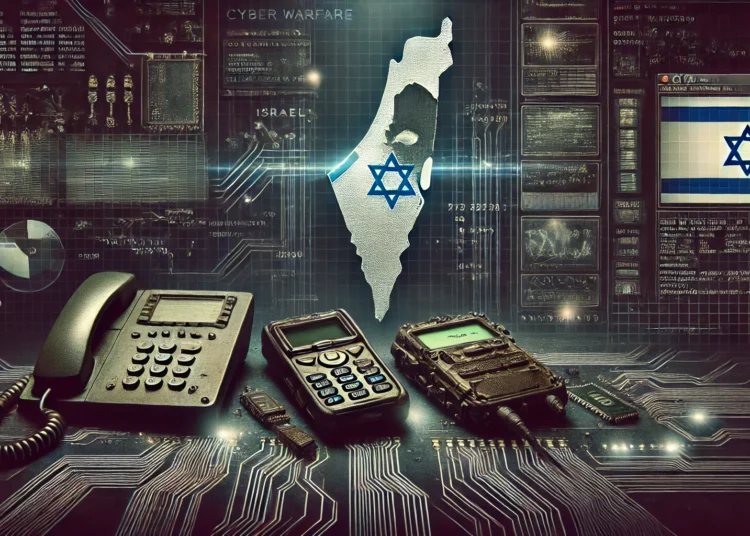FOCUSING ON REALITY AFTER ISAREL’S PSYCHOLOGICAL WARFARE
With a population of less than 10 million, limited natural resources, and surrounded by nations it perceives as “threats,” Israel anchors its economic strength and independence on advanced technologies.
- The high-tech sector accounts for 19.7% of Israel’s gross domestic product (GDP).
- 52.9% of the country’s exports stem from high-tech industries.
- High-tech workers comprise 11.6% of the total workforce.
- Israel is a global leader in R&D spending as a percentage of GDP.
- According to a study ranking the world’s most attractive start-up and innovation hubs, Tel Aviv ranks fourth after Silicon Valley, New York, and London.
Even during times when cybersecurity wasn’t a prominent agenda item, Israel consciously integrated cybersecurity into its military defense and offensive capabilities. For Israel, cybersecurity is a force multiplier. While Israel and a few other nations have become synonymous with robust cybersecurity capabilities, opting for policies that aim to “pull the plug” on technologies instead of developing necessary defensive and offensive capabilities has proven to be an unsuccessful and unsustainable strategy.
Israel’s proficiency in cybersecurity has forced Hezbollah to resort to traditional communication methods like pagers, landlines, and human couriers instead of smartphones. The high reliance on pagers, along with their inherent vulnerabilities, created an exploitable channel for an unprecedented Israeli operation on September 17, 2024. This operation, different in scale and methodology from past examples, was critically effective.
Possible Scenarios
Based on available information, three scenarios emerge, with the first two being less likely:
- Electromagnetic Pulse (EMP) Attack: The first and least likely scenario suggests that an EMP attack targeted the pagers. While such methods have been used recently against autonomous systems like drones, this approach would require close proximity to thousands of pager users. Furthermore, even if an EMP attack occurred, the likely outcome would be system disruption rather than the explosions observed.
- Software Vulnerability Triggered Battery Overheating: The second scenario posits that a software vulnerability caused the devices’ batteries to overheat rapidly, potentially triggered by a single broadcast message. However, visual evidence of the damage indicates an intensity far exceeding what could be caused by the batteries of such small devices. Additionally, synchronizing the overheating of thousands of batteries would require extremely specific conditions, making this scenario improbable.
- Explosives Embedded in Devices: The most plausible scenario is that Israel obtained information about Hezbollah’s pager orders, secretly embedded small amounts of explosives and triggering mechanisms into the devices, and waited for an opportune moment to detonate them using the broadcast feature.
The simultaneous detonations across thousands of locations and reports of surviving users receiving messages seemingly from Hezbollah leadership reinforce the likelihood of the third scenario.
Psychological and Strategic Implications
The immediate impact of Israel’s operation includes fatalities and injuries, including among children. However, the broader implications lie in the psychological warfare waged through meticulous planning and execution. Israel’s ability to infiltrate, exploit vulnerabilities, and turn an everyday communication tool into a weapon is both a psychological blow and a demonstration of technical superiority.
This incident cannot be merely categorized as a cyberattack; it represents a highly opportunistic and calculated operation that strikes deep psychological and strategic nerves. Israel sends a message: “I can enter your home, your pocket, and strike you at will.” Succumbing to this narrative would mean falling victim to Israel’s psychological warfare tactics.
The increasing number of connected devices and the growing trend of “smart” technologies have expanded the attack surface significantly. However, contrary to some social media claims, it is not feasible to destroy a device simply by entering specific IDs or phone numbers. Risks to individuals or groups strategically targeted by intelligence agencies differ vastly from those faced by general consumers.
Lessons for Turkey
While comparing Hezbollah’s technical capabilities to Turkey’s would be inappropriate, this incident highlights certain overlooked realities:
- We cannot rely on Israel or third countries like the U.S. and China in the critical high-tech sectors central to Israel’s development. Awareness of and resistance to digital colonization policies are essential.
- Even when critical technologies must be imported, the technical measures to mitigate potential risks must be thoroughly executed.
- Success in sectors like defense and aerospace cannot excuse insufficient progress in other sectors or technological trends.
- In strategic high-tech sectors like cybersecurity and telecommunications, we cannot remain silent as global monopolies attempt to eliminate domestic producers through unfair practices.
- We must halt the strategy of foreign companies obtaining “domestic goods” certificates through bureaucratic processes and using this leverage to establish new technological dependencies in Turkey.
- Strong R&D and innovation efforts, coupled with fair and mutually beneficial global partnerships, will strengthen our economic, diplomatic, military, and societal security.
By addressing these priorities, Turkey can shield itself from external dependencies while fostering a sustainable high-tech ecosystem that secures its future.
Source: İsrail’in Psikolojik Savaşının Ardından Gerçeklere Odaklanmak (savunmatr.com)

